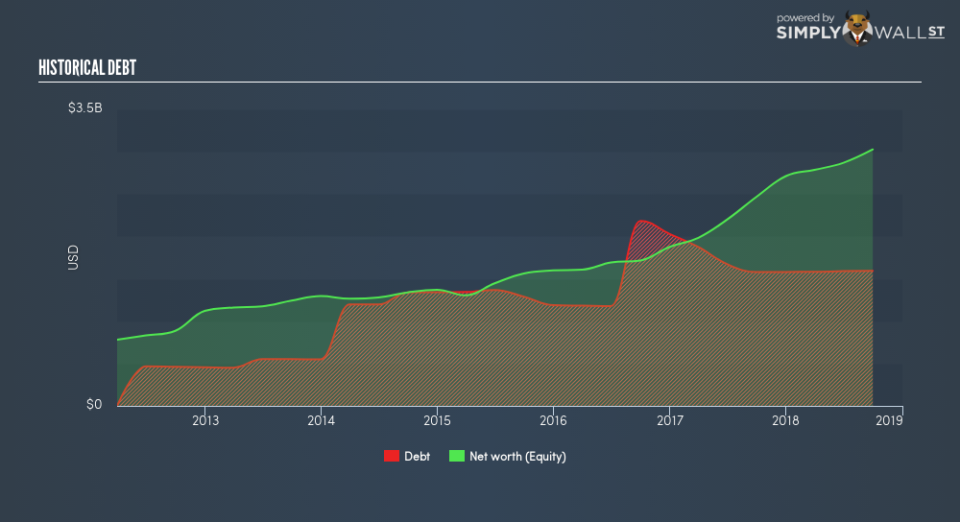What Investors Should Know About Jazz Pharmaceuticals plc’s (NASDAQ:JAZZ) Financial Strength

Small-caps and large-caps are wildly popular among investors; however, mid-cap stocks, such as Jazz Pharmaceuticals plc (NASDAQ:JAZZ) with a market-capitalization of US$7.5b, rarely draw their attention. Surprisingly though, when accounted for risk, mid-caps have delivered better returns compared to the two other categories of stocks. JAZZ’s financial liquidity and debt position will be analysed in this article, to get an idea of whether the company can fund opportunities for strategic growth and maintain strength through economic downturns. Note that this information is centred entirely on financial health and is a top-level understanding, so I encourage you to look further into JAZZ here.
See our latest analysis for Jazz Pharmaceuticals
Want to help shape the future of investing tools? Participate in a short research study and receive a subscription valued at $60.
How does JAZZ’s operating cash flow stack up against its debt?
JAZZ has sustained its debt level by about US$1.6b over the last 12 months – this includes long-term debt. At this current level of debt, JAZZ currently has US$1.1b remaining in cash and short-term investments , ready to deploy into the business. Moreover, JAZZ has generated cash from operations of US$779m over the same time period, leading to an operating cash to total debt ratio of 49%, meaning that JAZZ’s operating cash is sufficient to cover its debt. This ratio can also be a sign of operational efficiency as an alternative to return on assets. In JAZZ’s case, it is able to generate 0.49x cash from its debt capital.
Does JAZZ’s liquid assets cover its short-term commitments?
With current liabilities at US$341m, it appears that the company has been able to meet these obligations given the level of current assets of US$1.5b, with a current ratio of 4.29x. Having said that, many consider a ratio above 3x to be high, although this is not necessarily a bad thing.
Can JAZZ service its debt comfortably?
JAZZ is a relatively highly levered company with a debt-to-equity of 53%. This is not unusual for mid-caps as debt tends to be a cheaper and faster source of funding for some businesses. We can check to see whether JAZZ is able to meet its debt obligations by looking at the net interest coverage ratio. A company generating earnings before interest and tax (EBIT) at least three times its net interest payments is considered financially sound. In JAZZ’s, case, the ratio of 8.43x suggests that interest is appropriately covered, which means that lenders may be less hesitant to lend out more funding as JAZZ’s high interest coverage is seen as responsible and safe practice.
Next Steps:
JAZZ’s high cash coverage means that, although its debt levels are high, the company is able to utilise its borrowings efficiently in order to generate cash flow. Since there is also no concerns around JAZZ’s liquidity needs, this may be its optimal capital structure for the time being. This is only a rough assessment of financial health, and I’m sure JAZZ has company-specific issues impacting its capital structure decisions. I recommend you continue to research Jazz Pharmaceuticals to get a better picture of the mid-cap by looking at:
Future Outlook: What are well-informed industry analysts predicting for JAZZ’s future growth? Take a look at our free research report of analyst consensus for JAZZ’s outlook.
Valuation: What is JAZZ worth today? Is the stock undervalued, even when its growth outlook is factored into its intrinsic value? The intrinsic value infographic in our free research report helps visualize whether JAZZ is currently mispriced by the market.
Other High-Performing Stocks: Are there other stocks that provide better prospects with proven track records? Explore our free list of these great stocks here.
To help readers see past the short term volatility of the financial market, we aim to bring you a long-term focused research analysis purely driven by fundamental data. Note that our analysis does not factor in the latest price-sensitive company announcements.
The author is an independent contributor and at the time of publication had no position in the stocks mentioned. For errors that warrant correction please contact the editor at editorial-team@simplywallst.com.

